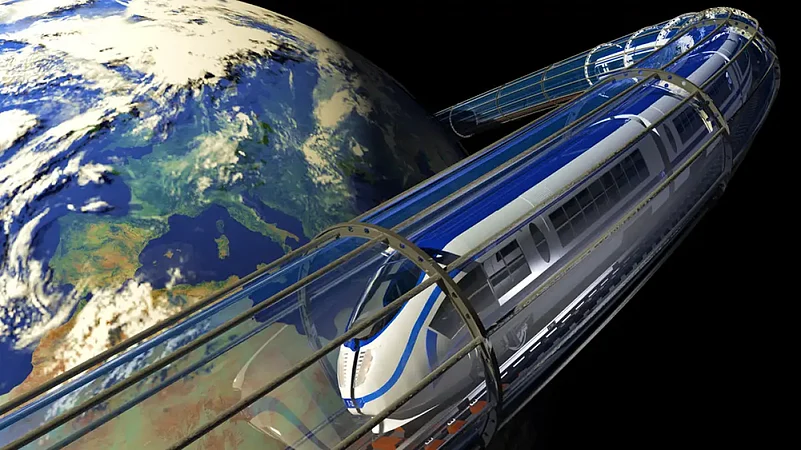Space tourism is the new travel fashion. As time flies by, with the help of technology, the dream of exploring space is coming true. In order to convert this dream into reality, Japanese researchers are planning to create a bullet train to the moon and Mars. Yes, you read that right! With the help of artificial gravity living facilities, the bullet train will help in transporting people from the earth.
Researchers from Kyoto University in Japan along with Kajima Construction, are working on it. This new interplanetary transportation system is known as the Hexatrack. This will function by maintaining a gravity of 1G while travelling a long distance to reduce the effects of extended exposure to low gravity. It is a space train which will run between the Earth, the moon and Mars.
These trains will be in hexagonal-shaped capsules and are known as ‘hexacapsules’ which will have a moving device in the middle. A mini-capsule will be a 15-metre radius link which will connect the Earth and the moon. A 30-metre-radius capsule will be provided from the moon to Mars.
The station on the moon, known as the lunar station, will be used as a gateway satellite. The station on Mars will be called as Mars Station. These will be situated on the Martian satellite Phobos.
As per the Human Spaceology Centre, the Earth station will be known as the Terra Station and will be a precedent for the International Space Station (ISS). As per media reports, the space train, known as Space Express, will work on the standard gauge track.
A structure known as The Glass will be built by the researchers to narrow the living structure which will be in the shape of a champagne flute with artificial gravity, green areas and water bodies along with public transportation.
The researchers’ major concern is regarding the low gravity and how it can affect reproduction.
The simplified prototype version of the Marsglass and Lunarglass is expected to be finished by 2050. However, as per media reports, the plan might take a century to be built.





















